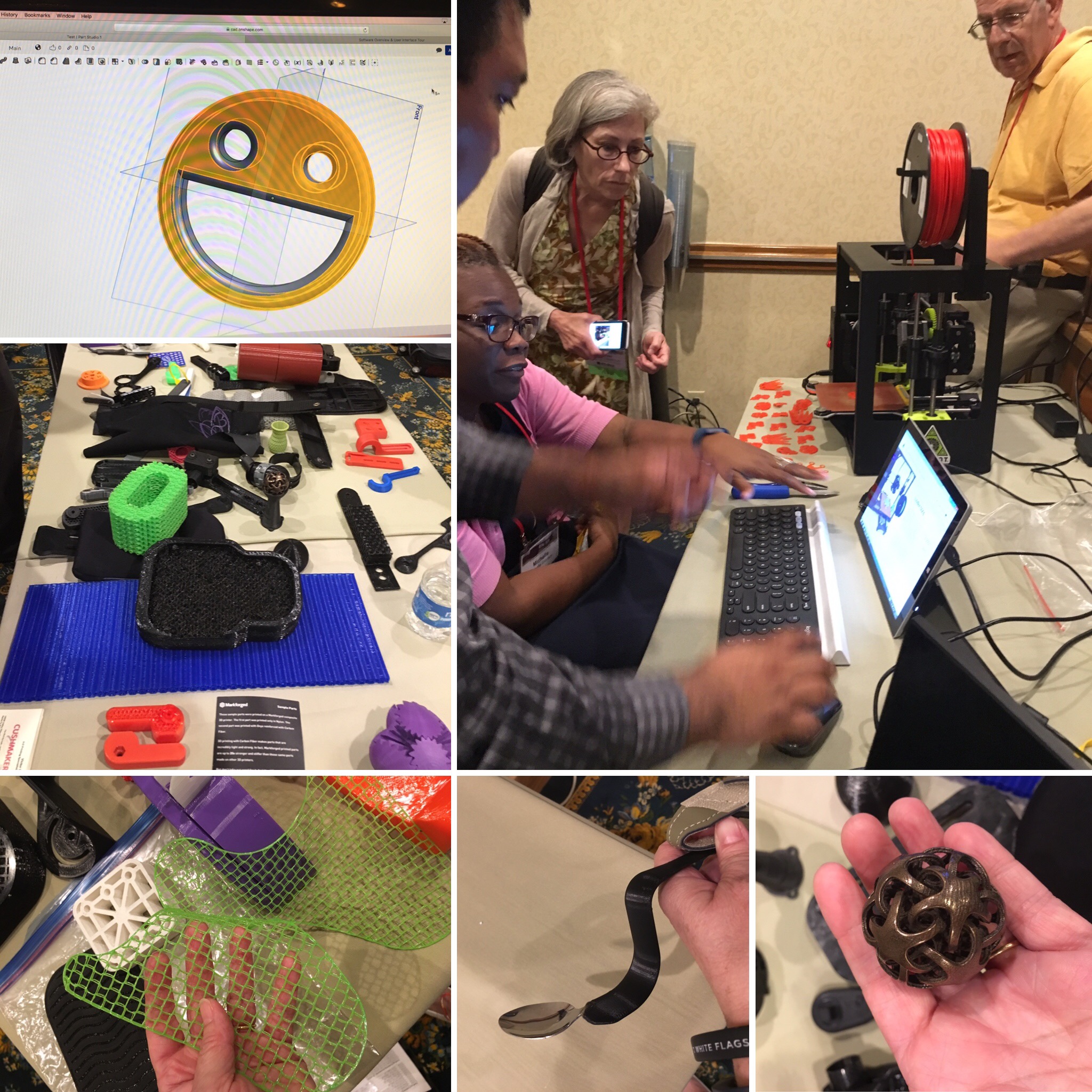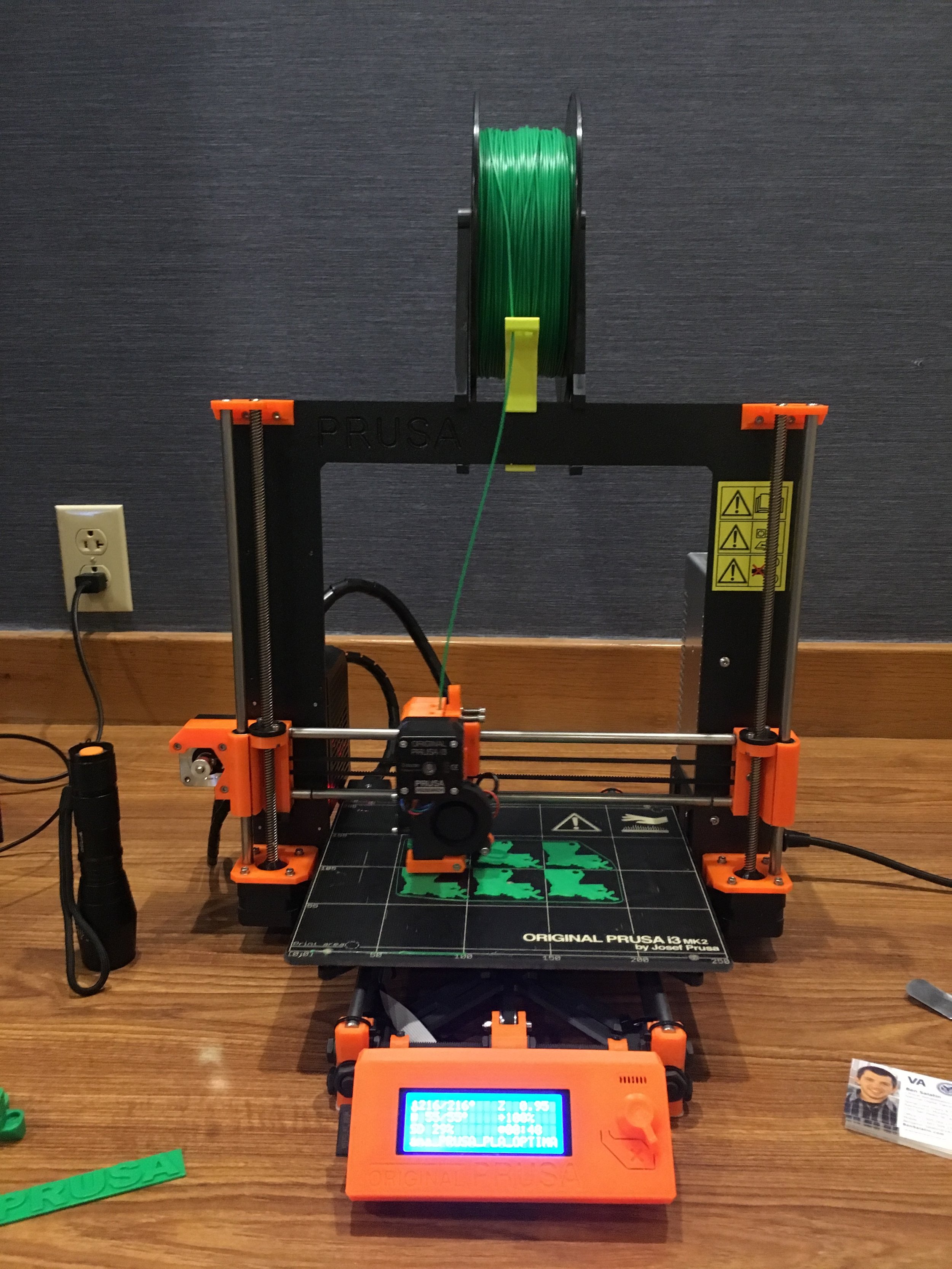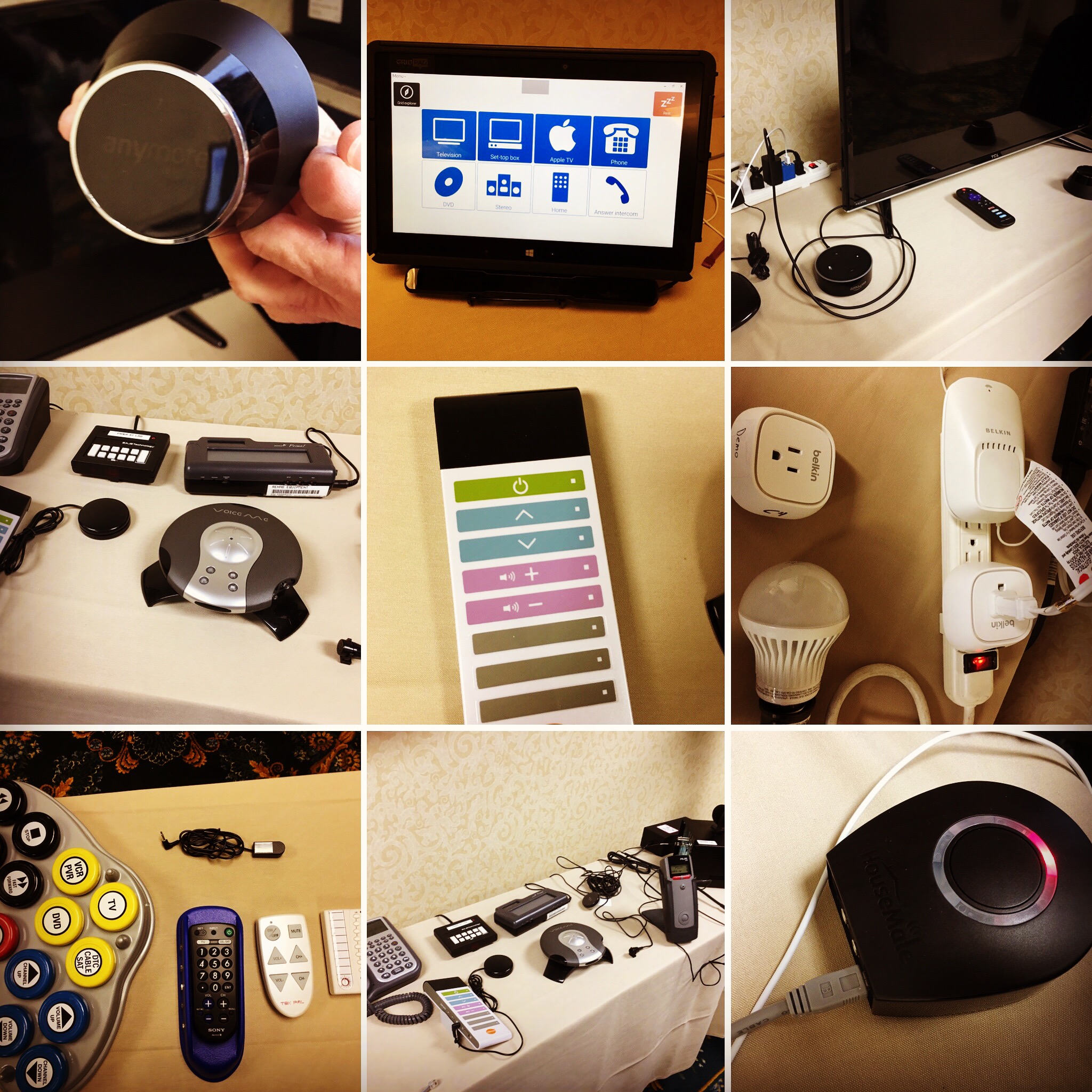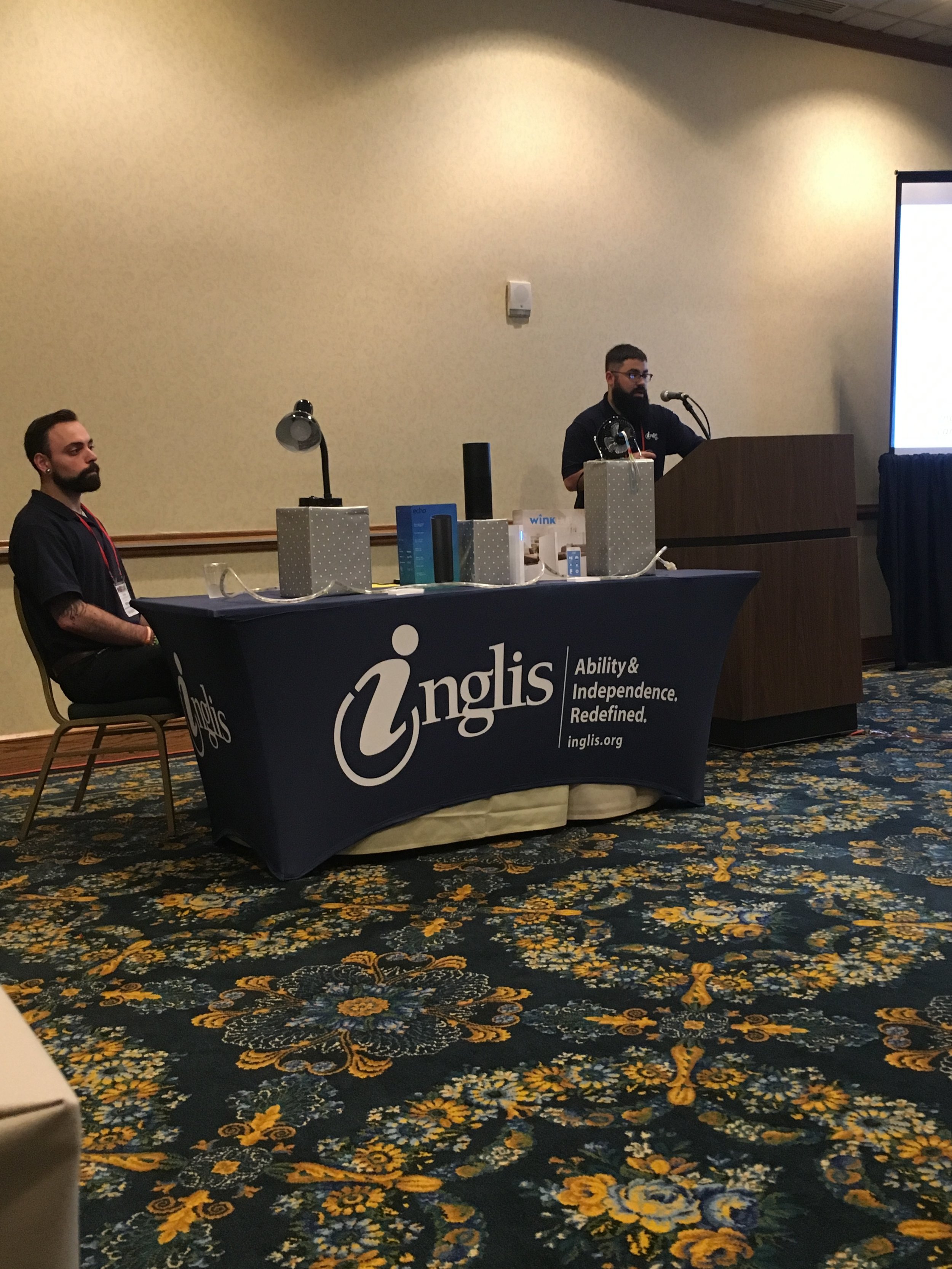RESNA 2017 AT Innovation Across the Lifespan
/The Rehabilitation Engineering and Assistive Technology Society of North America (RESNA) held its annual conference, RESNA 2017 AT Innovation Across the Lifespan, in New Orleans June 26-30, 2017. As an Assistive Technology Professional, Sara Feldman, PT, DPT, attends the conference as part of her certification and to learn about the technology that is not only available today, but also on the horizon for the future. The attendees include Rehab Engineers, PTs, OT, SLPs, researchers, suppliers, manufacturers, end users and other individuals working with assistive technology.
The week began with two half day Instructional Courses. The first was on Electronic Aides to Daily Living (EADLs) and was given by Brian Burkhardt, a Rehab Engineer with McGuire Veterans Medical Center in Richmond, VA, and Antoinette Verdone, a Rehab Engineer from ImproveAbility. They provided an excellent overview of the many products that are available both as commercial AT products dedicated to EADLs and consumer products that are not specifically geared toward people with disabilities but are being used as environmental controls.
The afternoon session was on 3D printing and how people are beginning to use it for custom AT options. Ben Salatin, a Rehab Engineer also with McGuire VA, described the steps involved with using a 3D scanner, design software and the printers. The most common materials used are plastics, but industry is using 3D printers for intricate metal work and biotech is experimenting with human tissues! Brian Burkhardt presented some of the work he has been able to do at the VA to customize or adapt devices to increase the ease of use for people. These examples included adapted utensils; an iPad key guard; a handle to turn a knob more easily; and joystick adaptations. They are currently working on a lightweight custom wrist splint. Richard Pasillas, of Cushmaker.com, showed examples of wheelchair positioning pieces they have custom printed for individuals…and even wheels/wheelchairs for dogs!
The conference was kicked off by Alex Mihailidis, PhD, PEng, whose Plenary presentation, “Disrupting the Aging and AT Landscape,” challenged everyone to rethink the current AT landscape for older adults and the aging population. He is the Scientific Director of AGE-WELL Network of Centres of Excellence, which focuses on the development of new technologies and services for older adults. His message is that the most disruptive and inspired ideas are the ones that move the field forward and he challenged us to not just focus on the current AT needs, but to look to, and design for, the future.
The next three days were filled with a variety of presentations. Here are few of the highlights of the meeting:
Our friends at Inglis House, also here in Philadelphia, gave a great presentation “Is there an Echo in Here?” on using the Amazon Echo as part of their independent living smart home design. Charles Sammartino and Michael Strawbridge described how they set up a smart apartment for individuals to increase their independence.
In the “Introduction to the Internet of Things,” LeighAnne Davis, Duke University, explained Smart Homes, Smart Communities and Smart Health and how they were different, but how they were connected, too. A Smart Home is one that has automation controlling various actions such as turning on/off lights, controlling the thermostat, or playing the television or music. This technology can really assist someone with limited physical function/ability. A Smart Community is when there are systems in place that can make decisions based on traffic flow or weather that are set-up to run automatically. This would be helpful for determining where handicapped/accessible parking is available. Smart Health is a way of monitoring your health through devices, similar to a Fitbit. An example of the systems working together in the future: You aren’t feeling well and your Smart Health sensors pick-up that you are dehydrated. When you go to the kitchen, you receive a message from your Smart Home to drink water and the refrigerator measures the amount you drink during the day. A message is sent to your daughter, which includes the fastest route to get to your house based on traffic through the Smart Community. Exciting or scary?
A panel discussion on Emergency Preparedness told the Louisiana story of Hurricane Katrina and the changes made to their system in the aftermath. A voluntary organization, Emergency Management for Disabled and Aging Coalition (EMDAC) organized following Katrina and Rita. They had recommendations for others who work with people dependent on AT including not only education for the users themselves, but also for the local first responders and shelters. Part of the presentation was given by two amazing women, Jessica Michot and Angela Lorio, from Trach Mommas of Louisiana. Their stories come from their experience of having to evacuate and not knowing what to do. They never wanted another parent to go through that alone.
There were a few great research and clinical projects presented their work in progress, too. CARE-RATE, a website designed to make finding information on the web easier and more accurate was presented by AGE-WELL investigator Jen Boger. Kudos to their group for all of the hard work and thoughtfulness they are putting into this project! Kamilya Gosmanova, from Albany, NY, described their work on getting BCI access to the MyTobii software and device. They are having some success and are continuing to move forward. There were student designs including a U-shaped adaptor to an electric toothbrush; steps to attach to a wheelchair for ease of access from the floor; and an adjustable height grab bar for public restrooms
Blair Casey accepts the Honorary Fellow Award on Steve Gleason's behalf.
An additional highlight of the meeting was the presentation of an Honorary Fellow Award to Steve Gleason for his work in moving assistive technology forward. Steve Gleason was diagnosed with ALS in January, 2011, and has been a strong advocate for AT during his journey. Blair Casey accepted on his behalf, and spoke passionately about the difference AT can make in the life of someone with ALS.
Steve Gleason has been quoted as saying, “Until there is a medical cure for ALS, technology will be that cure.” This conference gave attendees the tools they need to help make make a difference using technology.















